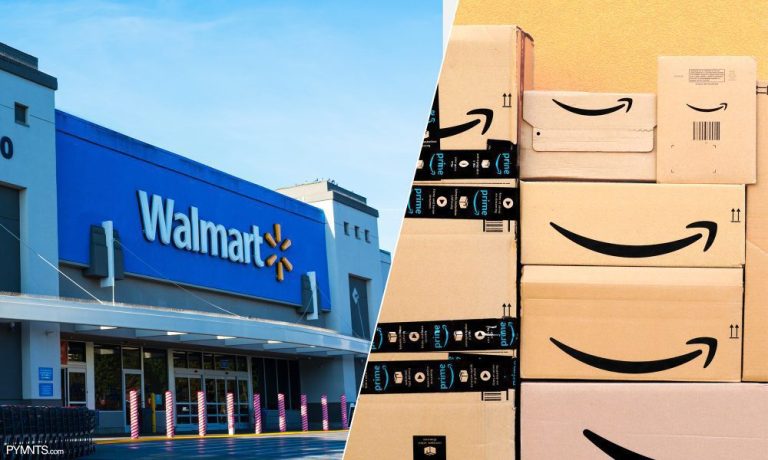Amazon and Walmart Will Bring Old Retail Industry Fights Into New Year

When Walmart’s new CFO spoke to investors last month, his message was simple: We’re built differently than the rest of the retail industry.
“Our purpose of saving people money has never been more important as inflation remains consistently high,” CFO John Rainey said on the retailer’s Q3 earnings call. “Walmart is well positioned to serve customers and gain greater trip frequency during tougher economic periods, and we have even more tools to do so in this cycle,” Rainey added.
Two weeks later, at an investor conference in New York, Amazon’s CEO told the audience that the 28-year-old eCommerce leader had built too fast, and had, in effect, gotten out over its skis.
“We built a physical fulfillment center footprint over 25 years that we doubled in 24 months,” CEO Andy Jassy said, before admitting that Amazon knew at the time that it might be overbuilding but went ahead with rapid expansion plans anyway. “It was hard for us to imagine what ’21 was going to be like, let alone ’22, but we decided that we were going to shade on the side of consumers and sellers who didn’t want to be constrained,” he said.
Stepping back a bit, one can see that the same inflationary economic circumstances had inverse effects on the two retail titans. One the one hand, rampant consumer belt-tightening and bargain hunting handed Walmart a short-term windfall — especially in its massive but low-margin grocery business — for sticking to a game plan it has run for 60 years.
At the same time, the identical shift in consumer (and investor) sentiment and retreat from discretionary spending in favor of necessities, left Amazon overextended and punished it for trying something new and moving even more aggressively than ever in its 28-year history.
And so as the eCommerce leader has seen its stock cut in half over the past 12 months, the reigning champion of Supercenters’ stock has held its ground while most companies around it have faltered.
The Next Chapter
To be sure, while Amazon shareholders, as well as its executive leadership and employees who also own the stock, are clearly not pleased at the moment, the fact remains that Amazon’s business is still growing, its 40-plus-percent share of U.S. eCommerce activity is a massive moat, and over 90% of its 200 million Prime members renew each year. While the company reduces headcount and other costs and muddles through its “do more with less” belt-tightening phase, the day will come when the economic clouds clear and the rain in Seattle stops.
While Jassy himself has said he expects layoffs to continue into 2023, each passing month is, theoretically, a step closer to a post-inflationary Amazon economy. While no one can say when that day might come, pretty much everyone knows that it will.
When it does, the other variable is how much more digitally savvy and diversified Walmart will have gotten, and how far along it has come with its new non-core businesses and omnichannel efforts aimed at simplifying the lives and connecting with the 160 million-plus U.S. shoppers who visit Walmart each week.
Just as Walmart has fought — and will continue to fight — hard to keep its near 20% share of the U.S. grocery category and comparable stake in personal care products, so too will Amazon fight to retain its overall dominance in eCommerce.
All the while, both brands will not only continue to play to their existing strengths but will also likely continue in their respective efforts to emulate the best traits of their rivals. In short, Walmart will tirelessly work to become an increasingly digital and omnichannel retailer, and Amazon will most certainly still strive to neutralize Walmart’s 5,000 physical store proximity advantage.
Whether it’s the next few months, quarters or even years, this retail fight will also likely see both brands doing more healthcare, more courting of sellers, more creative financing and more innovation to deepen their connection with customers.